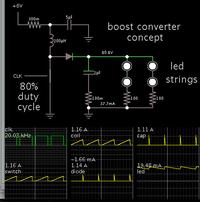mcGeek
Newbie level 4

I'm running 48 leds with a 6v 4.5AH lead acid battery, there are 20 leds connected in parallel each parellel line has got 2 leds making them 48 leds. the leds are white leds. please i need to know the total current and watt of the leds and how long the battery would last. please check the attached picture




